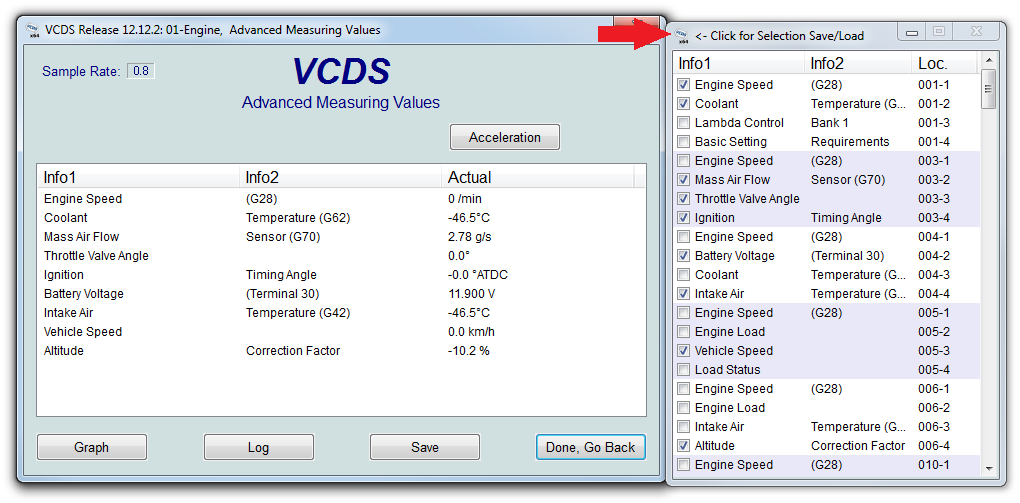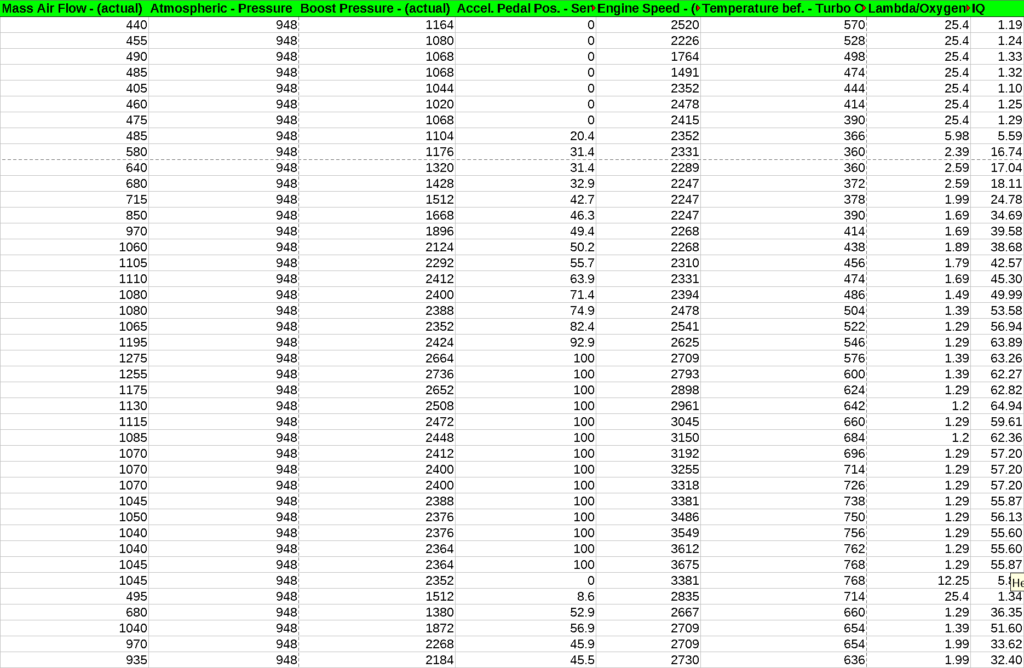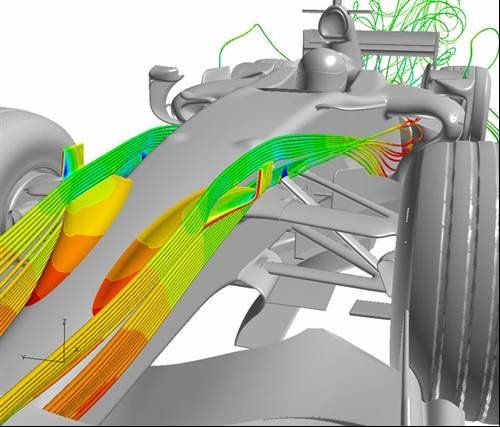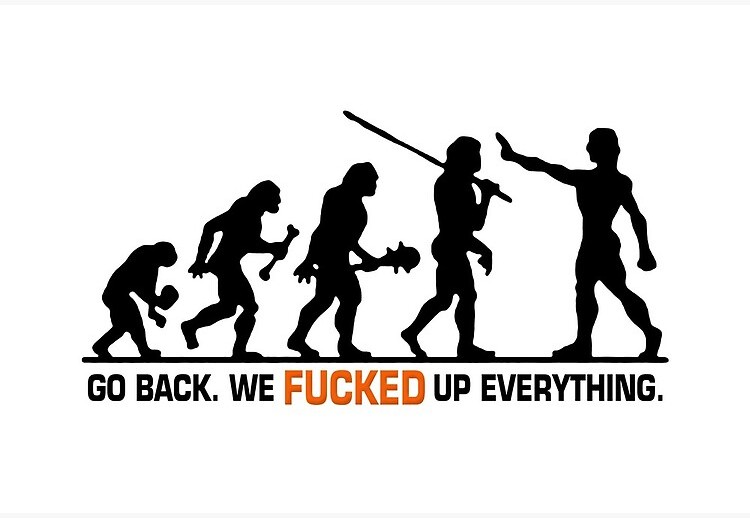We know already how to extract max. torque and properly calibrate engine from various BHG articles. But we still do not know whether we have optimal engine calibration or not. That is where feedback & logging comes in.

Most of us are materially poor car hackers, and we have no resources for data acquisition systems worth thousand of EUR as car manufacturers or motorsport teams use.
We end up logging by VCDS for example.
With VCDS, I can get max. 3Hz data sampling rate via OBD2 diagnostic port in my car. I am loosing up to 95% of sensor readings because the engine revolves almost 70x per second at 4000 rpm. In other words, you need at least 70Hz data sampling rate to get all important sensor readings.
Acquiring sensors’ data
You have remapped your beloved car according to our Simple & safe ECU remap guide. Or you even pushed your car to the limit with our articles about finding max. boost and optimized AFR for your driving style.
But it is just a general guide how to do something. Every car is different, and we need feedback from sensors like ECU does. You cannot blindly change something without checking effects of engine calibration.
I wish I had toys like guys in Banks Power. Gale Banks has got a nice dyno cell with custom data acquisition system for live reading of every possible engine parameter.
Example of engine log for calibration HR-v7.2
Decide what do you want to log because you will be not able to log all with decent data sampling rate. Less you log, more data you get.
VCDS logging templates
This example is based on Škoda Octavia (1Z3) 2.0TDi, BMM, 103kW built in 2006. Different car with the same engine, maybe different CAN and also data sampling may be different.
VCDS Advanced Measuring Block in TURBO mode provides the following data sampling rates:
-
1 module ~ 10Hz
-
2 modules > 5Hz
-
3 modules < 3 Hz
Imagine your engine is revolving at 33-66 revolutions per second (2000-4000rpm). I usually log at least two modules and as you can see you loose 85-93% of data.
If I work on injection timing, I am interested in SOI, injection duration and EGT.
Of course, you also need reference points associated with calibration maps. You will always need at least engine speed, accelerator pedal position because they are in almost every calibration map such as torque limiter or IQ.
Available Advanced Measuring Blocks for Hilda HR I.
Seek blocks that have most or all values in one block such as “block 10” as shown below.
default (>5Hz)
| 010-1 | MAF |
| 010-2 | atmospheric pressure |
| 010-3 | Boost (actual) |
| 010-4 | Pedal pos. |
| 074-1 | Engine Speed |
| 074-2 | EGT |
| 074-3 | Lambda |
VE estimate (<2Hz)
| 007-3 | IAT |
| 010-1 | MAF |
| 010-2 | atmospheric pressure |
| 010-3 | Boost (actual) |
| 010-4 | Pedal pos. |
| 045-3 | MAF (actual g/s) |
| 074-1 | Engine Speed |
| 074-2 | EGT |
| 074-3 | Lambda |
| 093-3 | MAF Average |
| 093-4 | MAF (calculated) |
N75/Boost (>5Hz)
| 011-2 | Boost Pressure (specified) |
| 011-3 | Boost Pressure (actual) |
| 011-4 | Charge Pressure – Control Duty Cycle |
| 074-1 | Engine Speed (G28) |
| 074-2 | Temperature bef. Turbocharger |
| 074-3 | Lambda/Oxygen Sensor |
If we can just log all interesting parameters at once and with at least 100Hz sampling rate. We are working on a data logging system that can improve accuracy of sensor readings.
Think twice before you change something in old cars because there is very little or no protection to save you (such as EGT pyro sensor or turbocharger speed sensor) !!!

Why not log all
Someone may wonder why I do not log the most “important” parameters such as:
-
Driver Wish/requested torque
-
requested IQ
-
injection timing
I doubt any commercial car offers final/real-time values over CAN/OBD2 because it is useless for car users. Even car mechanics are not interested in real-time data. Do not forget the purpose of OBD, it is just an On-Board Diagnostic for resolving common car issues.
Manufacturers’ never intended to offer a real-time data acquisition system for normal car users.
Our method is not 100% perfect either because my calculations of fuelling are based on MAF and Lambda readings. I trust Lambda sensor readings but MAF modelling is just an estimate of air mass flowing throughout the engine.
If I understood Bosch EDC16 functionality correctly, MAF sensor readings should be corrected for VE losses because my air density calculations are always higher that MAF readings.
But MAF is still just an air flow modelling without finite values. My fuelling can be off +/- 5% for example. I am sure it is more accurate as using set-point values from calibration maps 😉
Injection timing is not real either and most likely just a set-point. All modern cars use closed-loop control and injection errors are corrected by FMA for example.
You have to hack ECU RAM to get real values.
It is hard but not impossible
All we can do is to drive & log. Perhaps a dyno may help because you can keep constant engine load. I have seen many 15-seconds-dyno-runs and that’s all folks. I doubt anyone does intensive research because HP sells tuning.
I even tried to bribe duners – they refused to work for me. It looks like there is something fishy going on around, and they do not like discovering the reality of commercial chiptuning.
Sadly, I cannot log final values such as IQ or boost because my car (I dare to say most cars) is limited to only requested values such as Driver Wish or torque limiter.
For example your request 350Nm virtual torque – ECU checks all ambient data such as temperature, altitude and air density – but you end up just with 320Nm due to various restrictions enforced by ECU.
You may be lucky with more data sampling rate and measuring blocks. My car allows only requested set-point values. You need to hack into ECU for live data readings and final values.
One can write whatever s/he wants into calibration maps, but it doesn’t mean it is possible. Don’t be confused by 70mg IQ readings in log because in reality you get barely 60mg on 150PS TDi engines 😉
Don’t be a normal fool and always check real values.
I am lucky to live in the mountains and I can pick a long enough hill where I can keep pedal to the metal and hope VCDS catches something useful.
VCDS stores measured blocks in CVS format. I used to import CSV into LibreOffice Spreadsheet for sorting and filtering, but it struggles with large data sets. I eventually moved sorted out data into an SQL database on my server.
We can access and filter out quickly any desired value from logs in a split of seconds. LibreOffice often crashed with large datasets or filtering/searching took too long.
There is no good or bad, only incorrectly understood/used.
Rolling road is marketing hype
What is generally called dyno or rolling road is useless for any serious and precious engine calibration. Have you ever seen any professional racing team to play with a car on rolling road?
You need a controlled environment where you can adjust desired values for testing/calibration purposes. How the hell do you want to calibrate something if a tire temperature/pressure changes or every car has got a different transmission.
Fancy graphs and HP sells chiptuning.
Furthermore, initial dyno calibration is just a rough pre-release version for real-life testing in field or checks before race. I know only one commercial chiptuner that does a rough dyno calibration and then tests in the field.
Most chiptuners do 15-seconds-dyno-run and tell you it is the best and real power ROFL as you can read in the article mentioned in the first paragraph of this section.
Racing teams do not bother about wheel power because every race requires different gear ratio or same engine can be used in different cars with different transmission.
For example, your engine produces 400Nm @ 2500 rpm at flywheel.
Examples of feedback calculations
We have created calculators for you so that you don’t need to bother about Math and Physics.
Do not make all changes at once, otherwise you will never ever learn or debug errors you made. Trust me, multitasking is a fools’ game. Change parameters one by one and observe long term effects of your calibration.
MAF estimate
We can simply calculate air density and estimate MAF with above by parameters.
AFR estimate
We can estimate AFR with same calculator.
Required input data:
-
MAF estimate from above by example
-
Lambda
Injection Timing check
Somewhere around 6th version of engine calibration for Hilda HR I. we started again from scratch and calculated all over again…returned all to stock engine calibration and logged intensively for future comparison.
Changing engine parameters is easy but understanding why and what you get is science that very few understand or bother about. Most want to just change it and brag about theoretical numbers right?
Even if you keep it real and do not try to milk the injectors for something that is not there, you will end up with higher EGT than before. If you have no EGT sensor, do not change anything at all.
If you can keep similar operational condition, you can compare stock version with your calibration. If you have higher EGT or frequent DPF regen cycles….You are told “your calibration is crap, improve it“.
Simply put, EGT is your best feedback tool – unburned fuel, soot…the usual one. You can see enough smart ones on roads with thick black smoke from exhaust, the sign of proper engine calibration.
Final words
Where is a will there is a way. You can either drive a placebo or make it better. You have been given the tools now and rest is up to you.
You can compare calculated values with your live logs. If you are lucky enough, you can compare similar values from log. For example, a full load value for 2000 rpm.
















Leave a Reply